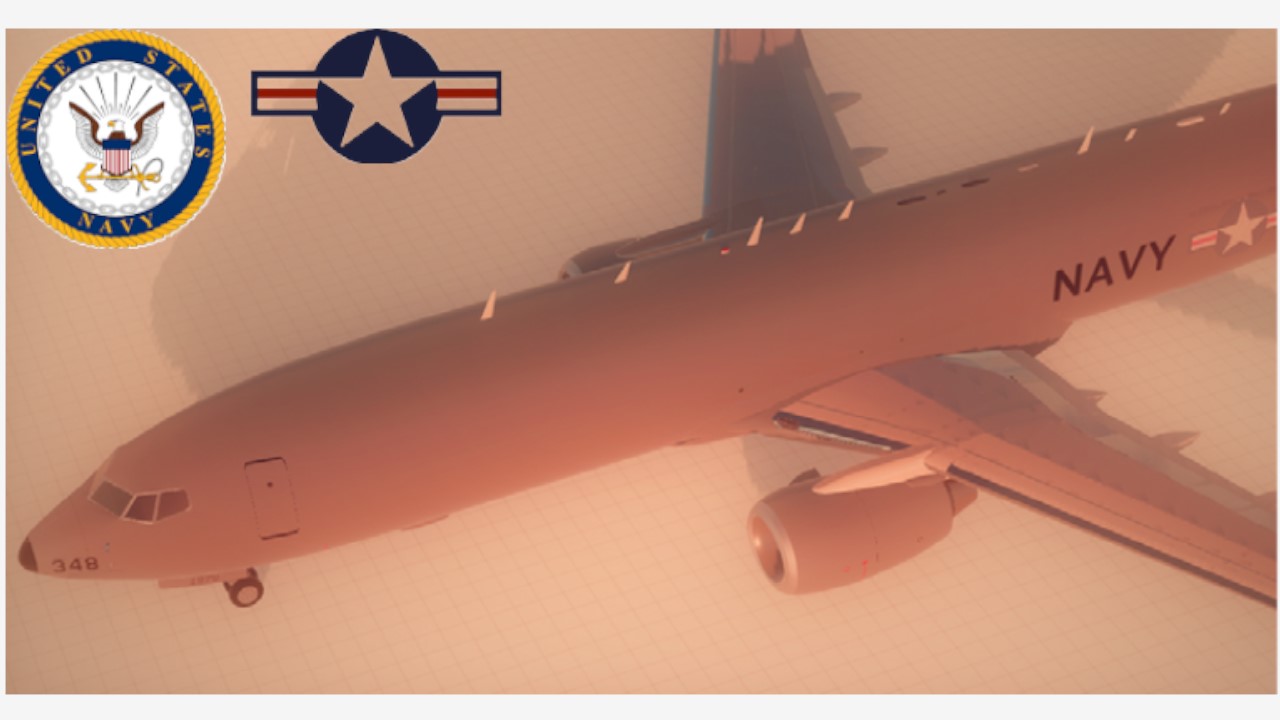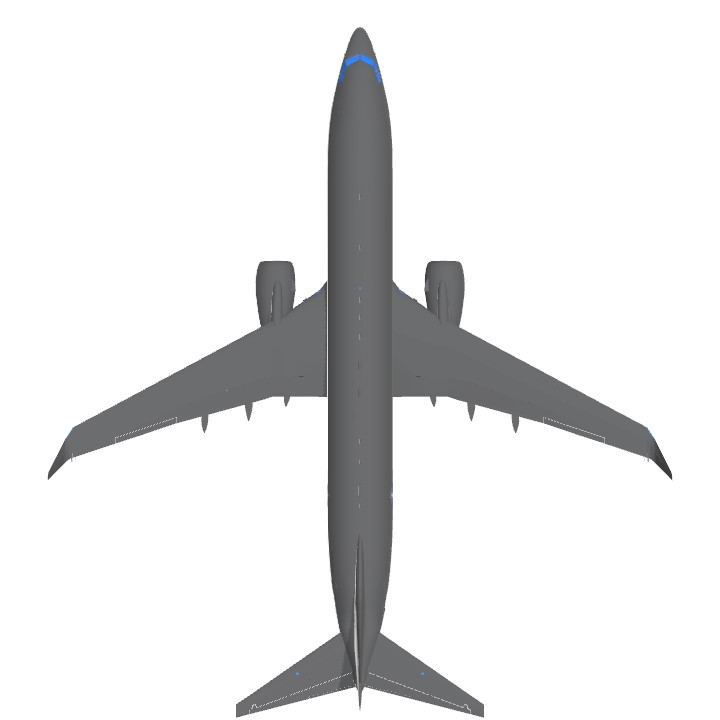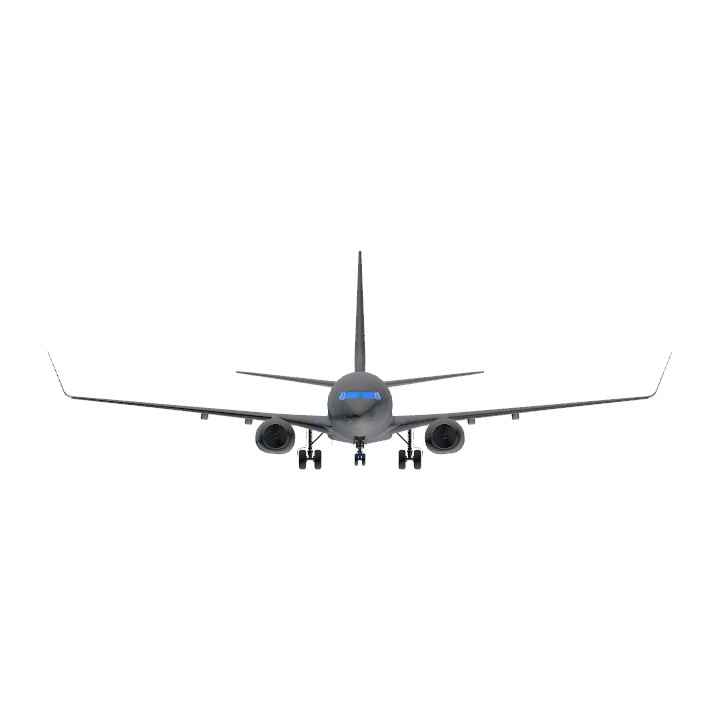About Boeing P-8A Poseidon
The Boeing P-8 Poseidon is an American maritime patrol and reconnaissance aircraft developed and produced by Boeing Defense, Space & Security, and derived from the civilian Boeing 737-800. It was developed for the United States Navy (USN).
The P-8 operates in the anti-submarine warfare (ASW), anti-surface warfare (ASUW), and intelligence, surveillance and reconnaissance (ISR) roles. It is armed with torpedoes, Harpoon anti-ship missiles, and other weapons, can drop and monitor sonobuoys, and can operate in conjunction with other assets, including the Northrop Grumman MQ-4C Triton maritime surveillance unmanned aerial vehicle (UAV).
The P-8 is operated by the United States Navy, the Indian Navy, the Royal Australian Air Force, and the United Kingdom's Royal Air Force. It has also been ordered by the Royal Norwegian Air Force, the Royal New Zealand Air Force, the Republic of Korea Navy, and the German Navy.
Development
Origins
The Lockheed P-3 Orion, a turboprop ASW aircraft, has been in service with the United States Navy (USN) since 1962.[4] In the 1980s, the USN began studies for a P-3 replacement, the range and endurance of which were reduced due to increasing weight and airframe fatigue life limitations. The specification required a new aircraft to have reduced operating and support costs. In 1989, Lockheed was awarded a fixed-price contract to develop the P-7, but this was canceled the following year.[5]
In 2000, a second competition for a replacement began. Lockheed Martin submitted the Orion 21, an updated new-build version of the P-3.[6] Boeing's proposal was based on its 737-800 airliner.[7] BAE Systems offered a new-build version of the Nimrod MRA4, a British jet-powered maritime patrol aircraft. BAE withdrew from the competition in October 2002, recognizing that without a production partner based in the United States, the bid was politically unrealistic.[8] On 14 May 2004, Boeing was selected as the winner of the Multimission Maritime Aircraft program.[9]
In June 2004, the USN awarded a development contract to Boeing.[10] The project was planned to be for at least 108 airframes for the USN.[11] More orders are possible from the other nations operating over 200 P-3s. Project value is expected to be worth at least $15 billion. Raytheon, Northrop Grumman, Spirit AeroSystems, GE Aviation Systems, Marshall Aerospace and Defence Group, CFM International, BAE Systems, and Marotta are major subcontractors.[12] In July 2004, the USN placed an order for five aircraft, and the first flight-test aircraft was to be completed in 2009.[11] On 30 March 2005, it was assigned the P-8A designation.[13]
The P-8 is to replace the P-3.[14] Initially, it was equipped with legacy systems with later upgrades to incorporate newer technology. The Government Accountability Office credited the incremental approach with keeping the project on schedule and on budget. The Naval Air Systems Command (NAVAIR) deleted the requirement for the P-8A to be equipped with magnetic anomaly detection (MAD) equipment as a weight reduction measure, improving endurance. A hydrocarbon sensor detects fuel vapors from diesel-powered submarines and ships.[15]
The P-8's first flight was on 25 April 2009.[1] The second and third P-8s had flown and were in flight testing in early August 2010.[16] On 11 August 2010, low-rate production of the P-8 was approved.[17][18] A P-8 released sonobuoys for the first time on 15 October 2010, dropping six in three separate low-altitude passes.[19] In 2011, the ice detection system was found to be defective due to the use of counterfeit components; allegedly these parts were poorly refurbished and sold to subcontractor BAE Systems as new by a Chinese supplier.[20]
A P-8A flying alongside a Lockheed P-3C Orion, close to Naval Air Station Patuxent River, Maryland, 2010
On 4 March 2012, the first production P-8A was delivered to the USN, flying to Naval Air Station Jacksonville, Florida, for training with the Fleet Replacement Squadron (FRS), Patrol Squadron 30 (VP-30).[2] On 24 September 2012, Boeing announced a $1.9 billion order for 11 aircraft.[21] On 10 June 2013, a U.S. Department of Defense (DoD) Inspector General (IG) report recommended delaying full-rate production over a lack of key data to assess if the P-8 met operational requirements; additional tests were also needed to guarantee a 25-year lifespan.[22] Boeing executives dismissed the report, saying that the test program was on track.[23] In 2013, full-rate production was delayed until the P-8 could demonstrate it can survive its 25-year lifespan without structural fatigue, overcome deficiencies, track surface ships, and perform primary missions.[24]
On 24 June 2013, during weapons integration testing, the P-8 achieved a significant milestone by firing a live AGM-84 Harpoon anti-ship missile and scored a direct hit on a low-cost modular target.[25] On 1 July 2013, an initial operational test and evaluation (IOT&E) report found that the P-8A was "operationally effective, operationally suitable, and ready for fleet introduction." Six test and nine low-rate initial production aircraft had been delivered at that point.[26] On 31 July 2013, Boeing received a $2.04 billion contract to build 13 P-8As in the fourth low-rate initial production lot, for a fleet of 37 aircraft by the end of 2016, and long-lead parts for 16 P-8As of the first full-rate production lot.

In February 2012, the P-8 made its mission debut during "Bold Alligator" 2012, an annual littoral warfare exercise.[50] In April 2012, it took part in Exercise Joint Warrior, flying out of RAF Lossiemouth.[51] During RIMPAC 2012 in the Hawaiian area, two P-8As participated in 24 scenarios as part of Air Test and Evaluation Squadron One (VX-1) while forward deployed to Marine Corps Base Hawaii.[52]
On 29 November 2013, its inaugural deployment began when six aircraft and 12 air crews of squadron VP-16 departed its home station of NAS Jacksonville, Florida, for Kadena Air Base in Okinawa, Japan.[53] This deployment was a pre-planned regional re-balancing action, but occurred shortly after China's establishment of the East China Sea Air Defense Identification Zone, heightening tensions.[54]
During exercises in 2012 and 2013, and an overseas deployment to Japan, the P-8 reportedly exhibited radar, sensor integration, and data transfer problems, leading to additional testing. In 2012–3, Director, Operational Test and Evaluation of the US government evaluated the P-8A Increment 1, and reported the following findings:[55]
P-8A was effective for small-area and cued ASW search, localization and attack missions, but lacked the broad-area ASW acoustic search capability of the P-3C. P-8A's Mk 54 torpedoes were of limited use against evasive targets.
P-8A was effective at ASuW search, detection and classification in all-weather at short to medium ranges for all surface vessels and at longer ranges for larger vessels.
P-8A was not effective for Intelligence, Surveillance and Reconnaissance mission due to various issues including lack of high-resolution SAR capability.
P-8A had much better range, speed, and reliability than older aircraft.[56]
DOTE concluded that it was not ready for deployment.[57] Pentagon acquisition undersecretary Frank Kendall disputed the report, saying that although its findings are factual, it did not acknowledge future capability upgrades for anti-submarine and wider-area surveillance.[58]
A second squadron, VP-5, completed its transition to the P-8 in August 2013.[53] During mid-2014, a pair of P-8s were dispatched to Perth, Australia for two months for an international search for the missing Malaysia Airlines Flight 370.[59] On 2 October 2015, USN P-8s stationed at Naval Air Station Jacksonville, Florida, alongside U.S. Coast Guard HC-144A Ocean Sentry, HC-130H and USAF Reserve HC-130P Combat Shadow aircraft, searched the Eastern Caribbean Sea for the missing SS El Faro cargo ship that sank on 1 October in the Category 3 Hurricane Joaquin near Crooked Island in the Bahamas.[60] On 20 February 2018, a P-8 of Patrol Squadron Eight (VP-8) rescued three fishermen whose vessel had been adrift in the South Pacific Ocean for eight days, deploying a search and rescue (SAR) kit containing supplies and communications equipment, the first time that a P-8 deployed a SAR kit in a real operation.[61]
USN P-8s routinely rotate through bases of allies.[62] In September 2014, the Malaysian government offered the use of bases in East Malaysia for P-8s, but no flights have yet been approved.[63]
On 7 December 2015, P-8s were deployed to Singapore as part of a Defense Cooperation Agreement between the US and Singapore for "fighting terrorism and piracy."[64] China criticized the Singapore deployment as "regional militarization by the U.S."[65] The third detachment of two P-8s based in Paya Lebar Air Base, Singapore, participated in naval military drills with the Singapore Armed Forces (SAF) in mid 2016.[66]
On January 9th 2022.
During the crash of SJ182, the P-8A patrolled for survivors and parts of the 737-500. They Identified the plane crash location and found the parts but no survivors we're found.
During the 2022 Russian invasion of Ukraine, at or before the time when the Russian Navy cruiser Moskva suffered damage and caught fire on 13–14 April, a U.S. Navy P-8A from Italy was patrolling within its radar range over the Black Sea[67] and the U.S., when asked, did identify the ship as the Moskva as part of intelligence sharing to help Ukraine "defend against attack from Russian ships."[68] The Moskva later sank. Ukraine claimed to have hit the vessel with one or more Neptune missiles. Russia claimed that the damage was accidental and not caused by a missile strike.
Credits
@Necc95 for the 737-800
@hpgbproductions for the US Navy pixel label image.
@IzzyIA for the Image Generator
Specifications
Spotlights
- BlackThuNDR 2.8 years ago
- SARACONIKaviationIndustry 2.8 years ago
- TheCommentaryGuy one month ago
- MobileBuilder21 one month ago
- ChihiroFujisaki 2.8 years ago
- RobertsAerodymanics 2.8 years ago
- Gabriel747 2.8 years ago
General Characteristics
- Predecessor Boeing 737-800 (-WINGLETS-)
- Successors 1 airplane(s)
- Created On Windows
- Wingspan 220.4ft (67.2m)
- Length 254.2ft (77.5m)
- Height 77.2ft (23.5m)
- Empty Weight N/A
- Loaded Weight 117,017lbs (53,078kg)
Performance
- Power/Weight Ratio 3.456
- Wing Loading 24.6lbs/ft2 (119.9kg/m2)
- Wing Area 4,764.8ft2 (442.7m2)
- Drag Points 152188
Parts
- Number of Parts 1724
- Control Surfaces 5
- Performance Cost 6,864





CREDITS:
@Necc95 for the Boeing 737-800
@hpgbproductions for the USAF Navy pixel image
@IzzyIA for the image generator
You should check them out!
@MRFOXY09 ty
soooooooo much reading, but beautiful plane, I can't wait for it to join my underwater fleet
@MobileGamer21 tysm
Great work
@windshifter1 Thank you!
Great plane and description! I just love it when people actually put effort into their descriptions and photos!